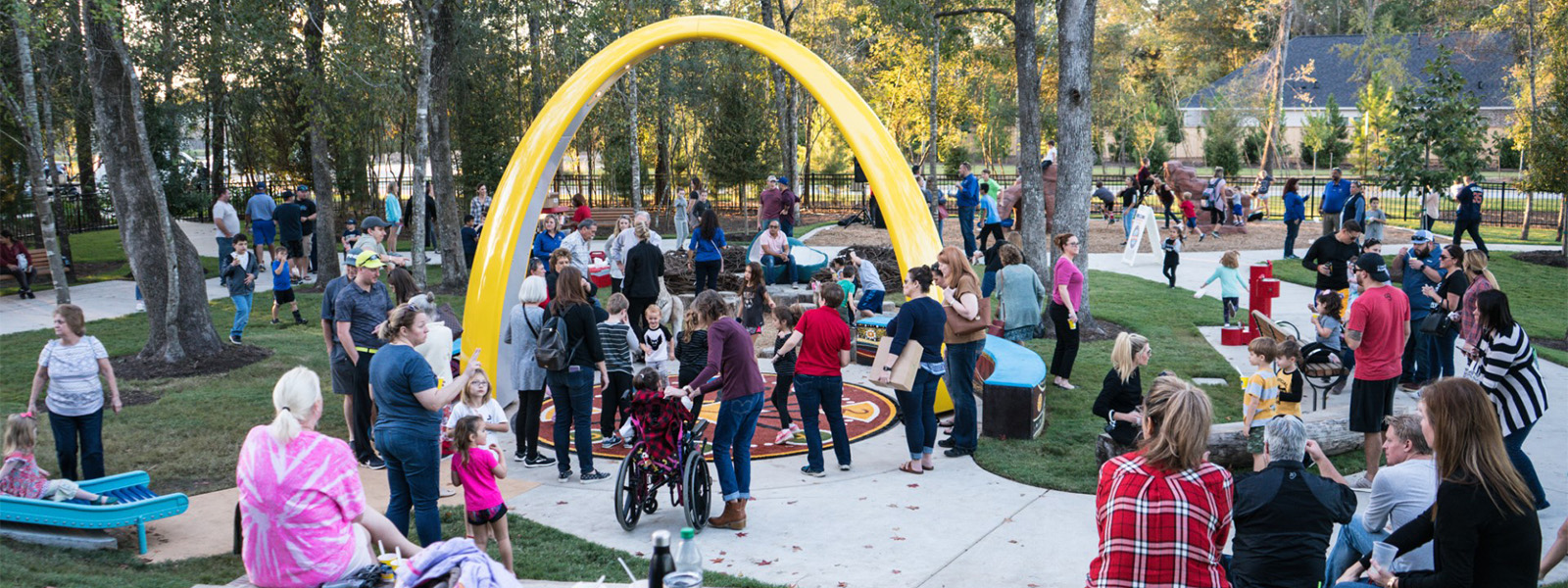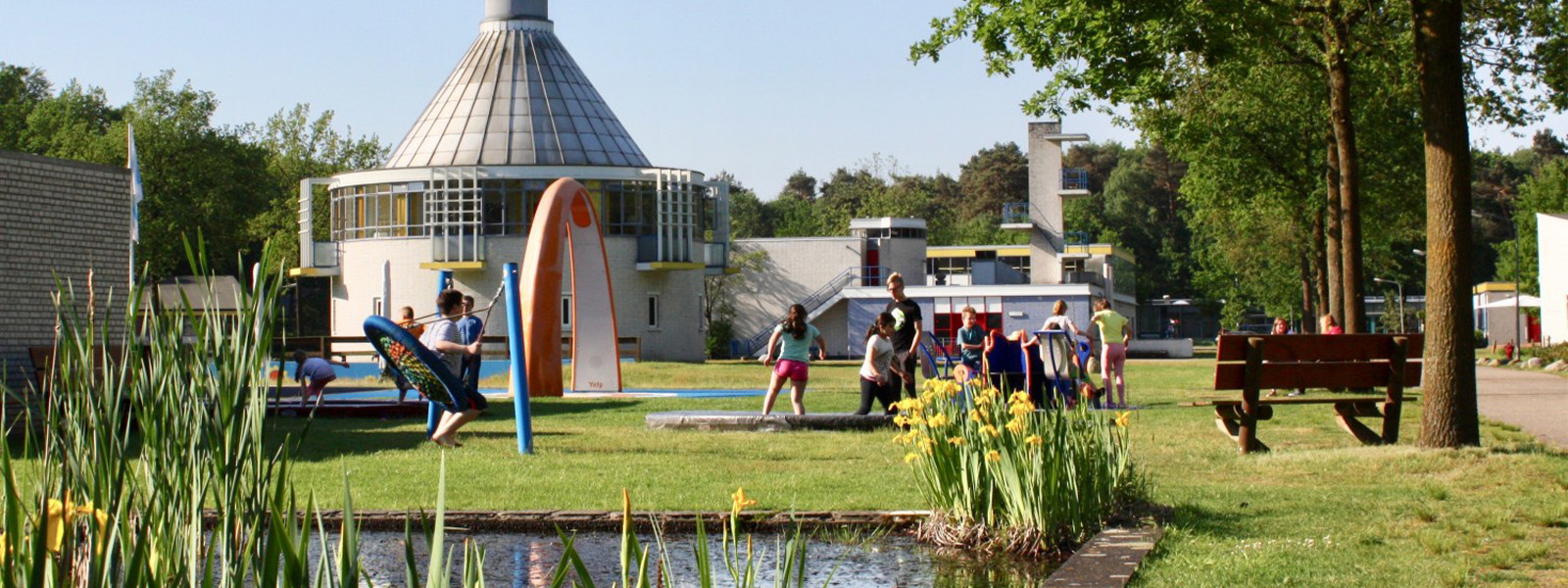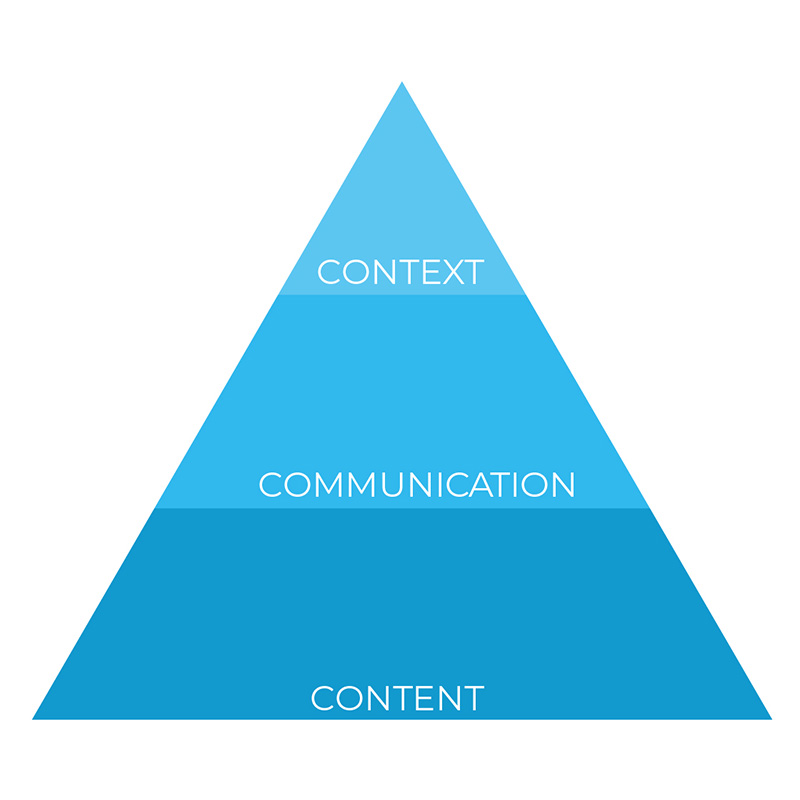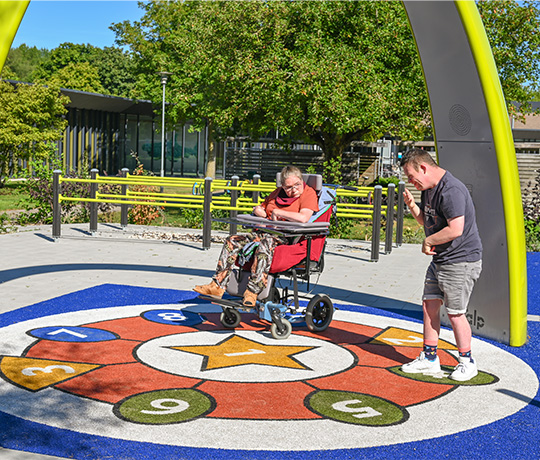Inclusive Play Research
This article results from a year of desk research, talking to experts and end-users. Download our research paper to learn more about the first pilot we launched with improved games, two months of play data, and expert reviews of these new inclusive games.
Playing outside should be available for everyone, children with or without a disability, players young and old, different nationalities, languages, preferences, or users’ needs. That is Lappset’s mission and vision.
Let’s start with the definitions
The need of every user is different
Inclusion means different things for different people. Therefore it's important to first start with a few definitions. Inclusive play aims to fulfil all users' needs, but with every user being different, this creates a conflict between other users' needs. Developing games for specific target groups offer great play experiences but are aimed towards player preferences. In the same way, different players like various genres of games. Users end up playing in four different scenarios, as shown in the overview.

A diagram illustrating the differences between inclusion, exclusion, integration & segregation.

We're not trying to design for all of us; we're trying to design for each of us. If we design for people who have unique needs, it benefits people universally.
- Bryce Johnson, a senior inclusivity designer on Microsoft's Xbox team[7]

Opening of Wallaroo Park, Teaxas United States of America. Interactive technology and outdoor play in a fully accessible park
Inclusion vs Exclusion
Competition creates inequality but offers a specific playstyle for a player preference: competitive play.
Exclusion It aims to fulfil the needs of a part of the users.
Separation: Segregation It aims to fulfil all users' needs but divides a single play space into multiple play spaces.
Separation: Integration It aims to fulfil the needs of all users and creates separate areas within a single play space.
Inclusion It aims to fulfil the needs of all users within a single play space.
Types of Design
When designing solutions for play spaces, it's essential to be aware of three different ways of developing a solution to achieve inclusion.
Prescriptive Design
Design a piece of equipment or environment specific to a small user group or individual based on a remedy to minimize or compensate for the group's or individual's functional limitation.
Accessible Design
Design a site, building, facility, or portion that complies with the minimum accessibility standards.
Universal Design
UD is the design of products and environments to be usable by all people, to the greatest extent possible, without the need for adaptation or specialized design.

An extraordinary location, this holiday resort for children with disabilities has a Sona tailored towards the user groups.
The seven principles of Universal Design
- Equitable use. The design is useful and marketable to people with diverse abilities
- Flexibility in Use
- Simple and intuitive
- Perceptible information
- Tolerance for error
- Low physical effort
- Size and space for approach and use
Every user is an expert
The player, player's attendant, parent, or teacher knows best what they need and like in a game. Every case is different. Therefore, it's essential to give the right information about which games are inclusive and which potential barriers to play are available in the game to enjoy the experience. After many meetings with experts, end-users, and attendants, we've collected a clear and easy list of potential obstacles. This way, the user can decide for themselves if they want to play the game. When playground equipment is too complicated for children with disabilities, they are less likely to use it for fear of improper use, leading to isolation.
3 Cs of Inclusion
Lappset's Inclusive Design Principles
The higher up in the process, the more impact you will be able to make
At Lappset, we have three action points for inclusion. The 3 Cs of inclusion cover entirely every step of the process needed to create and design an inclusive play space. The higher up in the process, the more impact you will be able to make. Many teams often focus on the content, but this comes later for better and longer-lasting effects.

Illustration of the 3Cs of inclusion shown in a pyramid diagram.
Context
The first action is to create as early on in the project the proper context, policies, and awareness for the play space. Without this, the goals will be unclear, there will be no processes to share the playground's existence, and the playground's content will not match the users' needs. This process involves sharing knowledge and wishes with the playground design team and should define goals, users, and users' needs. Involve the right people, share knowledge of inclusion within the group, try out the products you would like to place, and discuss the team's wishes, chances, and opportunities. Involve the community, parents, schools, teachers, and end-users, reflecting every end-user group. Think about the practicalities. Make sure the location and distance to the playground are not an issue. The site is accessible and provides the required facilities.
Communication
Share information actively, go out, and try to reach potential users and visitors. The social barrier is more significant than the physical barrier. Users must know about the play space to be able to experience it. Often, users fear the unknown or don't know about a play space's possibilities or existence.
Communication and transparency are more important than the actual play space itself.
Communication and transparency are more important than the actual play space itself. At the beginning of the process (and during the context phase), finalization, and years after completion, it's critical to communicate about the play space and its goals. Information about the play space, facilities, accessibility, and offerings should be available to users or visitors.

Girl playing on the Sutu at the Wilhelmina Childrens Hospital in the Netherlands. The playground is a pocket park on the roof of the hospital.
Content
When you successfully complete the first two actions, you can create excellent content. The content should match each of the following standards:
- Challenge - The product should deliver thrill, challenge, and different levels of active play.
- Independence - The user should feel independent when interacting with the product.
- Safe -The product should be safe for the user and create a safe environment to enjoy.
- Sensory - The product should stimulate the senses of the user.
- Variation - The product should include enough variation.
- Flexibility - The product should be flexible enough to adapt to the user's needs.
- Calmness - The product should support moments of calm.
The game improvements
Improve or a new game?
Lappset Interactive start bundles have proven to be the most popular games, especially the Sona start bundle games have proven themselves over the last ten years to be enjoyed the most based on hundreds of thousands of hours of play. For these games, we can definitely say that the core gameplay works and is a lot of fun. But as we see with these 3 locations, inclusion obstacles are still present.
Our goal here is to improve the existing games and not create five completely new games. Completely changing a game can "fix" a problem, but this can mean removing the offending game component or mechanics from the game and changing the core gameplay. We're looking at finding solutions for these obstacles.
One solution we apply is social game mechanics. As mentioned before, the need for everyone to play together at all times is not a goal in itself. But where we create opportunities for players to interact with the play equipment's design, the games can stimulate social play.
Here are a few examples of game mechanics we use to encourage players to play together:
- Turns
- Cooperation
- Voting
- Roles
- Rewards
- Spectators

Three ways to fulfill a user’s needs
The three-way division in the games highlights the different ways a game can fulfil a player's needs. This can be based on skill, preference, or interest. We've defined three ways to fulfil a player's needs.
Complete
The core gameplay offers for as many players a fun experience without any obstacles. Every player can experience the complete game.
Flexible
The game includes a competitive/difficulty component that can be changed or turned off. We've made the game flexible so as many players as possible can enjoy it. The users determine which parts they would like to see in the game.
Thrill
The game offers a thrilling experience or focuses on a specific game mechanic or target audience. It offers something amazing for a smaller group of players, but by doing so, it excludes certain players.